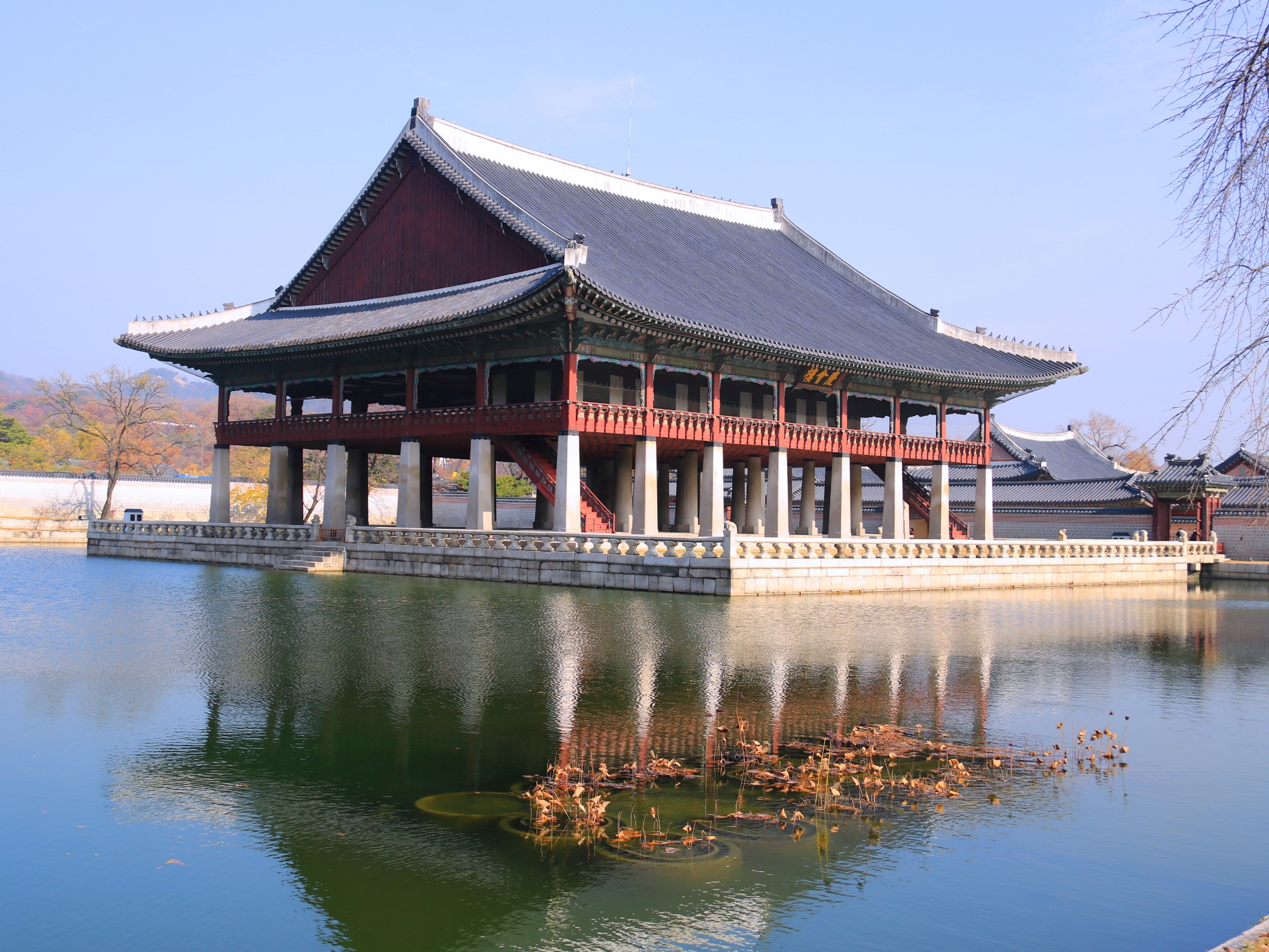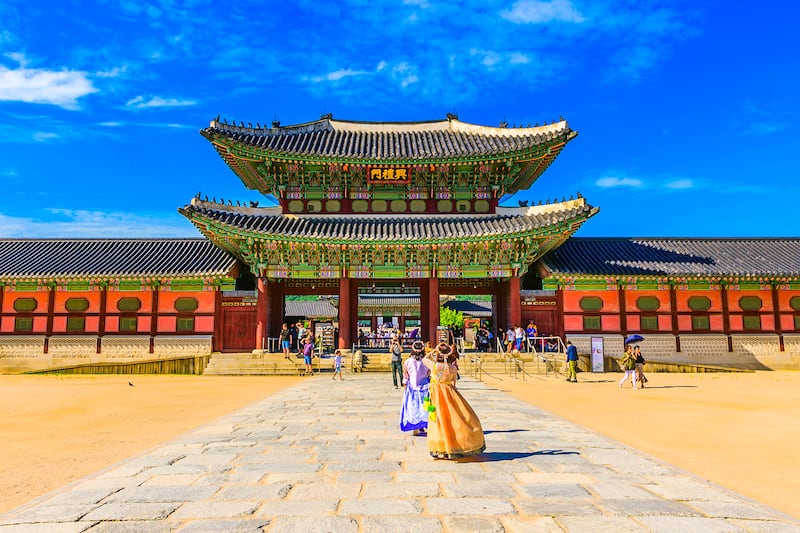Gyeongbokgung Palace is a beautiful place to visit in Korea. It was the main palace of the Joseon dynasty and is now a popular tourist destination. There are many things to see and do at the palace, including touring the buildings, taking pictures, and enjoying traditional Korean food.
Gyeongbokgung Palace, located in Seoul, Korea, is one of the most beautiful and historic palaces in all of Asia. If you’re planning a trip to Seoul, be sure to add Gyeongbokgung Palace to your itinerary! Here are some of the best things to do while you’re there:
1. Stroll through the stunning gardens – Gyeongbokgung Palace is home to several traditional Korean gardens, and they are absolutely breathtaking. Take a leisurely stroll around the grounds and enjoy the peaceful atmosphere.
2. Visit the National Folk Museum – This museum is located within the palace grounds and it’s a great way to learn about traditional Korean culture and history. The exhibits are very well done and informative.
3. Watch a traditional Korean performance – While you’re at Gyeongbokgung Palace, be sure to catch a traditional Korean performance such as Namsadang Nori or Pansori. It’s a great way to experience authentic Korean culture!
4. Explore the buildings – The palace buildings are incredibly beautiful, both inside and out. Be sure to explore as many as you can during your visit!
5. Take plenty of photos! Gyeongbokgung Palace is one of those places that’s just begging to be photographed. So make sure you bring your camera (or phone) with you and snap plenty of pictures!
Table of Contents
What is Gyeongbokgung Palace Known For?
Gyeongbokgung Palace is a Joseon Dynasty palace located in Northern Seoul. It is one of the Five Grand Palaces built by the Joseon Dynasty. Gyeongbokgung Palace is also known as the “Northern Palace” because it is the furthest north when compared to the other Four Grand Palaces.
The palace grounds cover over 3,000,000 square meters and contain more than 500 buildings. These buildings include government offices, reception halls, living quarters for courtiers and royal family members, storage rooms, stables, etc. Gyeongbokgung Palace was first built in 1395 but was destroyed by fire during the Japanese invasion of 1592.
The palace was rebuilt in 1867 but was again destroyed by fire during the Korean War (1950-1953). The current incarnation of Gyeongbokgung Palace was completed in 1986 and opened to the public as a historical site and museum. The main hall of Gyeongbokgung Palace is Geunjeongjeon Hall which served as a throne room and a place for state ceremonies.
To either side of Geunjeongjeon Hall are two smaller halls called Jeukjae Hall (left) and Imjingak Hall (right). Jeukjae Hall was used for audiences with high-ranking officials while Imjingak Hall served as a waiting room for those who had an audience with the king. Other notable features of Gyeongbokgung Palace include:
-The National Folk Museum of Korea which is located on the palace grounds and contains exhibits about traditional Korean life from ancient times to the present day;
-Gwanghwamun Gate which is the main entrance to GyeongbokgunagPalace;
-Heungnyemun Gate which is a secondary entrance to Gwanghwamun Gate;
-Hyangwonjeong Pavilion which is a small pleasure pavilion that sits on an artificial island in Hyangwonji Pond;
How Long Do People Spend at Gyeongbokgung Palace?
Gyeongbokgung Palace is one of the most popular tourist destinations in Seoul, and visitors often spend several hours exploring the grounds. The average person spends about 2-3 hours at Gyeongbokgung Palace. However, there is no set time limit and some people may stay for longer if they wish.
Why Should We Visit Gyeongbokgung Palace?
Gyeongbokgung Palace is one of the Five Grand Palaces built by the Joseon Dynasty. It was the main royal palace of the Joseon Dynasty and is located in Seoul, South Korea. The name “Gyeongbok” means “lucky or prosperous”.
The palace complex has several gates including Gwanghwamun Gate, Geumcheongyo Bridge, and Heungnyemun Gate. There are also a number of important buildings within the complex such as Geumcheonggung (a residence for queens and concubines), Gwanghwamun Plaza (the main square in front of Gwanghwamun Gate), National Folk Museum of Korea, and Changdeokgung Palace (another royal palace). There are many reasons to visit Gyeongbokgung Palace.
For one, it is a beautiful and historic building complex that is representative of traditional Korean architecture. It is also a great place to learn about the history of the Joseon Dynasty as well as see some traditional Korean art and culture. In addition, Gyeongbokgung Palace is centrally located in Seoul making it easy to get to from most parts of the city.
What is Inside Gyeongbokgung Palace?
Gyeongbokgung Palace, also known as the Northern Palace, is the main and largest palace of the Five Grand Palaces built by the Joseon Dynasty. It is located in northern Seoul, South Korea. The palace complex has more than 600 rooms within its buildings and covers an area of over 40 hectares.
The buildings of Gyeongbokgung Palace were destroyed during the Japanese invasion of 1592 but were rebuilt in 1867. The palace was once again destroyed during the Korean War (1950-1953) but has since been restored to its original form. The main entrance to Gyeongbokgung Palace is through the Gate of Supreme Harmony (Gwanghwamun).
This gate leads to a large courtyard (Geumcheongyo) which contains the Hall of Supreme Harmony (Jeonghwaemun). The Hall of Supreme Harmony is the largest hall in Gyeongbokgung Palace and was used for important state functions such as royal ceremonies and banquets. Behind Jeonghwaemun is another courtyard (Heumcheonyo) which contains the Halls of Centralized Reception (SejongmUN) and Absolute Righteousness (Yeongchwihoegwan).
SejongmUN was used for receiving foreign envoys while Yeongchwihoegwan was used for meetings with high-ranking government officials. To the west of Geumcheonyo are two more courtyards; Manghwaheon and Sacheonwangggung. Manghwaheon was used as a resting place for kings while Sacheonwangggung served as a place for queens and concubines to reside.
North of Sacheonwangggung is Myeongjeongjeon which served as the king’s bedroom chambers. Myeongsedo, an outdoor theatre, can also be found here. To the east of Geumcheonyo lies Daejojeon or ‘Great Making Hall’.
This building was used by kings as their office space where they held meetings with their ministers. Adjacent to Daejojeon is Junghwajeon or ‘Hall of Royal Presence’. This hall served as a waiting room for queens and concubines when they had an audience with the king in Daejojeon.

Credit: www.koreatraveleasy.com
How to Go to Gyeongbokgung Palace
Gyeongbokgung Palace is the largest and most beautiful palace in Joseon Dynasty. It was built in 1395 and served as the main royal palace of the Joseon Dynasty. The palace was destroyed by Japanese invaders in 1592 but rebuilt in 1867 by King Gojong.
The palace complex has 5 grand gates, 4 main halls, 6 palaces, offices, kitchen quarters, and more than 500 rooms. You can learn more about the history of Gyeongbokgung Palace and see its beautiful architecture by taking a guided tour of the palace complex.
Gyeongbokgung Palace Guide
Gyeongbokgung Palace is the largest and most magnificent palace of the Joseon Dynasty. It was built in 1395 and served as the main royal palace of the Joseon Dynasty. The palace complex consists of Gwanghwamun Gate, Geumcheongyo Bridge, Heungnyemun Gate, Sajeongjeon Hall, Gyeonghoeru Pavilion, Gyotaejeon Hall, Hoesangbang Painting Studio, Myeongjeongjeon Hall, Daejojeon Hall, Hamnyeongjeon Hall, Geumcheonghoeru pavilion and Jagyeomseok.
The first thing you will see upon entering Gwanghwamun Gate is Heungnyemun Gate. Heungnyemun Gate is the main entrance to the palace complex. It was built in 1395 and renovated in 1483.
The gate has two stories with a roof made of ceramic tiles. On either side of the gate are guardian statues called Yeouido (left) and Gwaneumdo (right). Next, you will see Sajeongjeon hall which was used for important state functions such as banquets and audiences with foreign envoys.
The hall has two stories with a veranda on each floor. In front of Sajeongjeon is Gyotaejeon hall where Queen Sunheon lived during her reign. To the right of Gyotaejeon is Myeongjeongjeon hall which was used by the king for his daily activities such as reading and working on state affairs.
Myengjongjon has a similar layout to Sajeognjon but it only has one story. In front of Myeongeojeon is Daejojoen hall where the king slept and worked on private affairs. Hamnyeongeon hall is located behind Daejojoen and it served as the queen’s sleeping quarters when she was not residing in her own residence within the palace grounds.
To the left of Daejojoen is Hoesangbang studio where court painters created portraits of kings, queens, concubines, and princesses. Jagyeomseok library is adjacent to Hoesangbang studio. It housed over 60 000 volumes making it one of Korea’s largest libraries at that time.
Seoul Station to Gyeongbokgung Palace
Seoul Station to Gyeongbokgung Palace The best way to get from Seoul Station to Gyeongbokgung Palace is by subway. The journey takes about 20 minutes and costs around 1,500 won.
From Seoul Station, take line 1 (the blue line) towards Incheon International Airport and get off at Gwanghwamun station (exit 5). From there, it’s a short walk to the palace gates.
Conclusion
Gyeongbokgung Palace, located in Seoul, is the largest and most well-preserved royal palace from the Joseon Dynasty. The palace was built in 1395 and served as the main residence of the king and his family. It was also the site of many important state ceremonies and events.
The palace complex is comprised of a number of buildings, including the main hall, throne room, audience chamber, council chambers, library, and private quarters for the king and queen. There are also a number of gardens within the complex. Visitors to Gyeongbokgung can explore all of these areas as well as take part in traditional activities such as writing with a brush or wearing hanboks (traditional Korean clothing).
